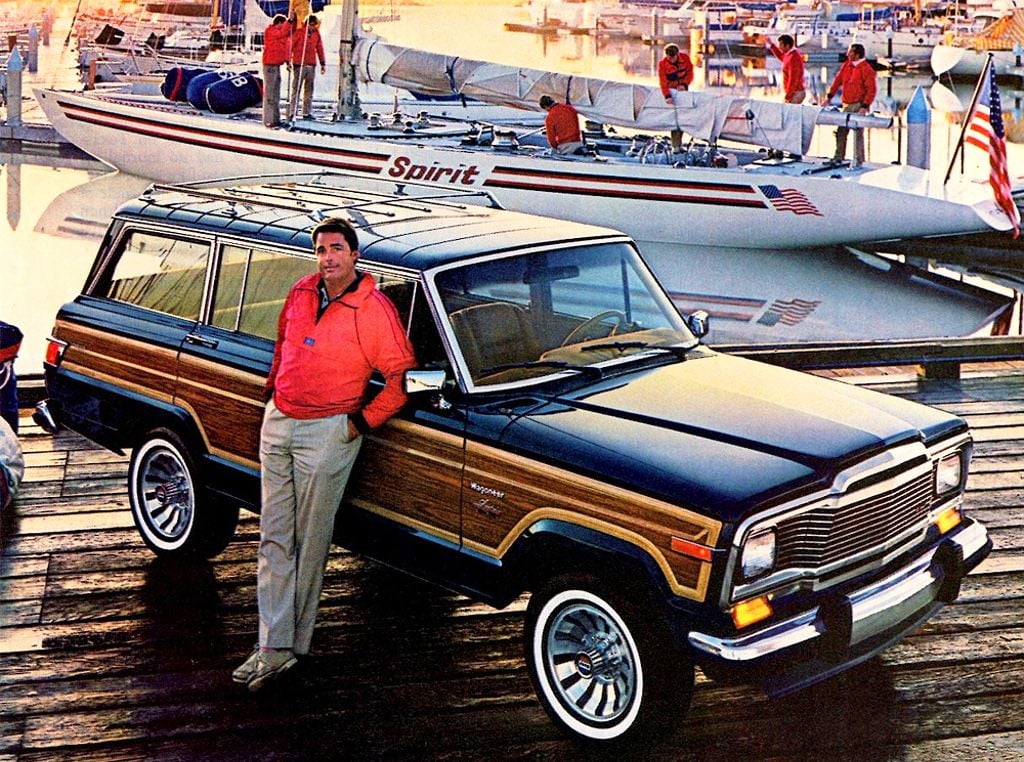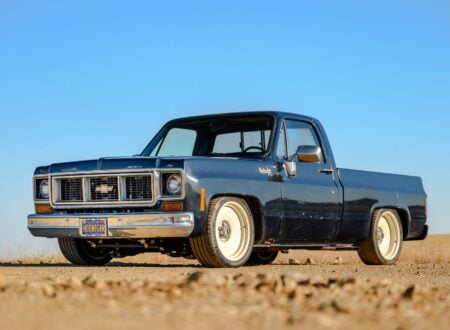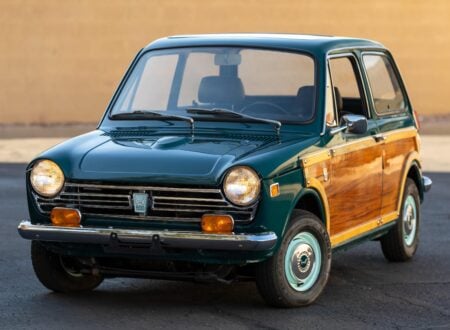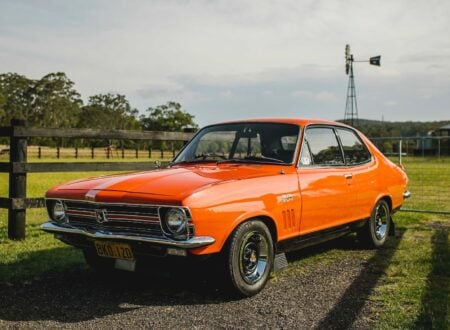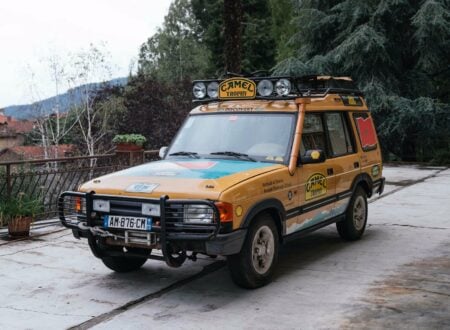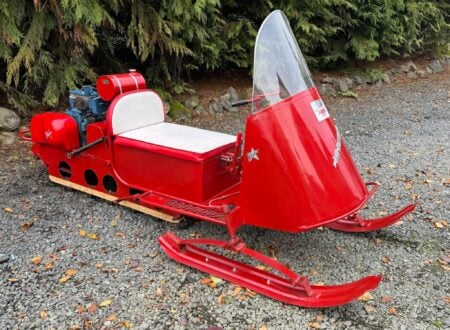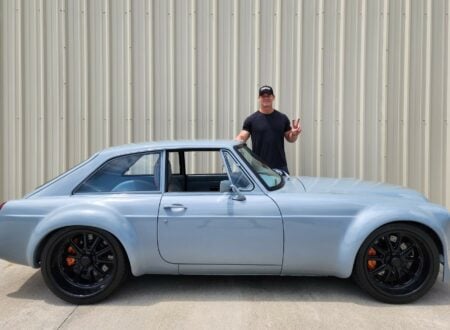The Jeep Wagoneer was arguably the world’s first Luxury Sports Utility Vehicle. Prior to its 1963 debut there were others who had tried to market vehicles that tried to blend the more desirable features of a conventional automobile with the utility of a four wheel drive.
The World’s First Luxury Sports Utility Vehicle
There was a mindset in those early “SUV” such as the International Harvester Scout and Ford Bronco that didn’t seem to quite believe that conventional car comforts and features would be something that a customer wanting the utility of a 4WD would purchase. But Jeep took the plunge when they blended car and 4WD into a classic integrated whole, and after spending three years and around $20 million dollars in development costs released this trailblazer to see if it might conquer the world.
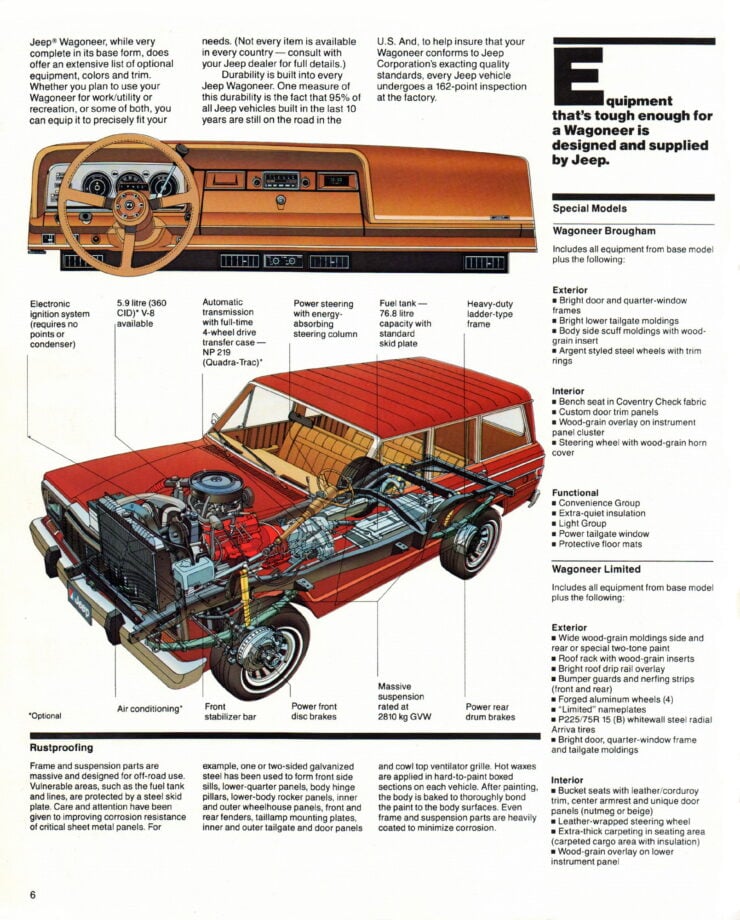

The Jeep Wagoneer was to remain in production, in pretty much the same form other than for engine, transmission and trim changes, from 1963 until 1991. So it was in production for twenty eight years mostly in its original form, not many vehicles can lay claim to a record such as that. The factors that helped it survive, and which make it a sought after vehicle today, are factors which the American car industry would rather ignore.
American car makers have long pushed the idea that they have to come up with a new model every year, or at least every two or three years, and that this is because of public demand – it arguably isn’t. Car buyers are more often than not a practical bunch, and the knowledgeable car buyer is normally a very practical person who is looking for longevity in the car model they buy.
A car is an expensive item and so it is expected to last for years – ten to twenty is reasonable. Parts and support should be available for at least twenty to thirty years, and maintenance should be affordable and as much a “DIY” proposition as possible.
But there’s another dimension also. The design of ordinary cars has been heavily influenced by motoring journalists who seem to have imagined that customers want a car that can be taken onto a race track and cornered at high G-forces, a car that offers sporting performance. The upshot of this was cars getting lower and wider, with minimal ground clearance: cars that, if you are on a country road at night and encounter a road-kill and can’t avoid it, then your car will not have the ability to go over it without damage, cars that often can’t even negotiate a steep driveway without scraping.
The upshot of all this has been that car makers are increasingly making SUV type vehicles with decent ground clearance because they find that customers are buying them more than ever, and ceasing to make or market the old style conventional car. So we see makers increasingly producing specific sports oriented cars such as the Ford Mustang or Chevrolet Camaro for the enthusiast market, and SUV type vehicles for the general market.
The Jeep Wagoneer was one of the most significant trailblazers in the creation of the modern SUV and it pre-dates the other most significant luxury SUV, the British Range Rover, by seven years.
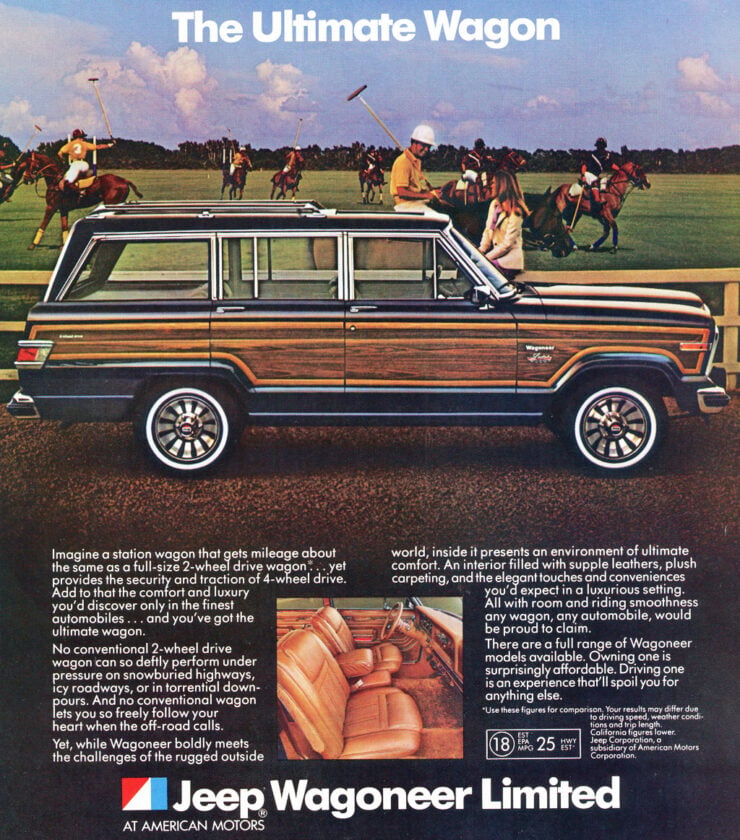

If you are looking for a classic Jeep Wagoneer then it is highly probable that you are one of those car buyers who is looking for a practical comfortable vehicle that will go wherever you want it to go, that you can fix yourself, yet a vehicle that is a perfect height so that either male or female can get in and out with dignity while dressed in formal attire: and you are almost certainly looking for a vehicle that is “a keeper”: one that you will pass on to its next custodian in your last will and testament.
Jeep SJ Wagoneer Model History
The SJ Jeep Wagoneer and its sibling the Jeep Gladiator truck were both built on the same basic chassis and used the same basic body style. The truck version being sold with the various body types as common for trucks and the Wagoneer made as a station wagon, more like a car.
The Wagoneer and Gladiator were offered in either 2WD or 4WD with an independent front suspension. The independent front suspension for the 4WD drive version was a simple idea that probably should have worked better than it did. the front axle was hinged at its centre so that the Dana differential and right axle were one unit and the left side axle the other: so the effect was to have independent swing axles. It used torsion bars attached to the short upper “A” arms and used the swing axle as the lower pivot support: these axles were further supported by control links.
Model Years 1963-1964
These first Jeep Wagoneers were testing the market in order to find out what would sell and what would not: to that end they were offered with a wide range of options to find out what customers would order, and what they would not. The year of the Wagoneer’s debut was also the year Willy’s Jeep become “Kaiser Jeep Corporation”.
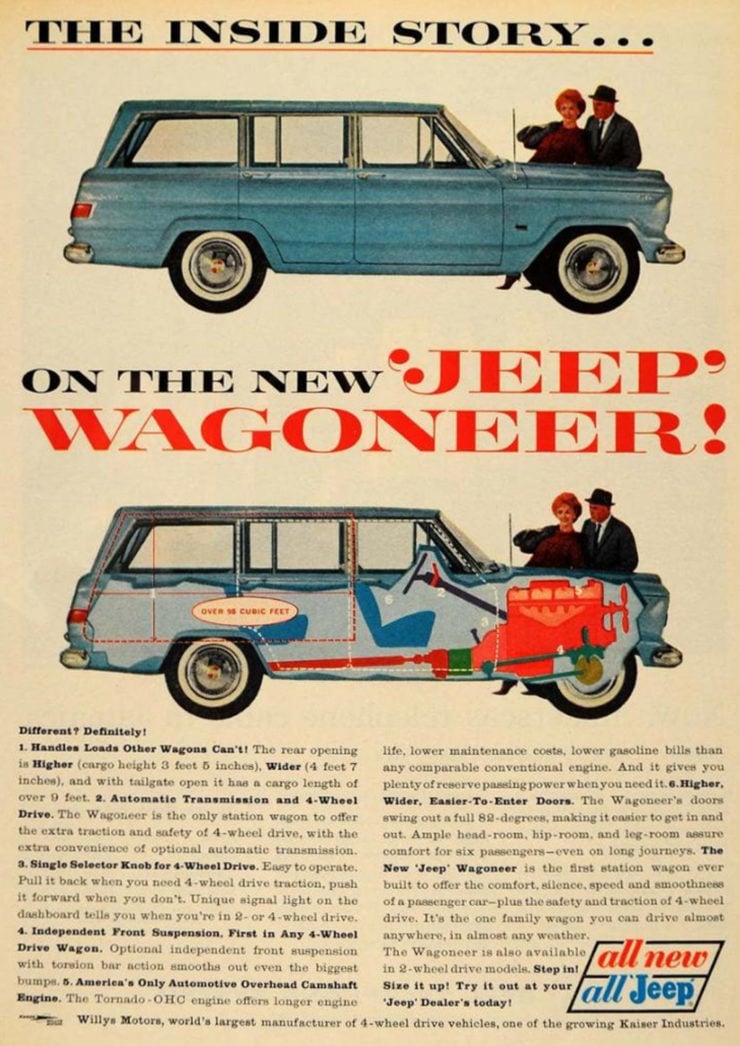

The vehicle was powered by a SOHC “Tornado” inline six cylinder engine of 230 cu. in. (3.8 litres) capacity and delivering 140 hp. This engine drove through either a three speed manual, or three speed automatic gearbox. The Wagoneer could be had with either 2WD or 4WD.
The 4WD featured a transfer box which provided both high and low range and was controlled by a lever located on the right side of the transmission tunnel. The vehicle was also provided with Warn free-wheeling front hubs. The idea of the Warn free-wheeling hubs was to completely disconnect the wheels from the front axle. This meant that the engine did not need to waste power turning over the front differential when 4WD was not needed and this made for better fuel economy.
Because the Wagoneer had a chassis onto which the bodywork was attached it was easy for Jeep to offer a variety of body styles, just as they would for a truck.
The Wagoneer was offered as a four door station wagon, two door station wagon, (both station wagons having a drop-down rear door with wind-up rear window), two door panel van (i.e. no rear windows and double side-opening rear doors). A compass was a standard fitting: this being a very useful provision: I don’t know about you but my sense of direction seems to be infallible – i.e. always 180° wrong.
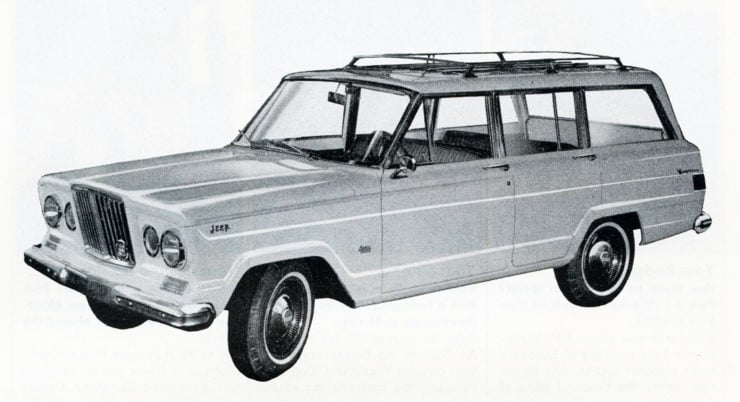

The 4WD was offered with a standard leaf springs and live axle front suspension as standard, or with the independent swing axle torsion bar front suspension as an extra cost option. Brakes were 11″ drums front and rear and optional extras included, front and rear power take-offs, seat belts, and in 1964 air-conditioning. It was found necessary to also offer a low-compression engine producing 133 hp to solve the problem of pinging at high altitude.
Model Years 1965-1966
In 1965 the Wagoneer was fitted with a new “safety package” as standard equipment. This included front and rear seat belts, a “high impact” windshield, padded dashboard, and a dual circuit braking system. A new engine was made available as an option: this was a 327 cu. in. (5.4 litre) AMC V8 delivering 250 hp and 340 lb/ft of torque @ 2,600rpm.
1965 saw the independent front suspension for 4WD cars dropped: it had not been popular and did not have a good reputation. In late 1965 the SOHC Tornado engine was replaced with an American Motors 232 cu. in. (3.8 litre) inline six cylinder engine.
With the Wagoneer selling well and clearly filling a viable market niche Kaiser Jeep debuted a new luxury model in 1966. This was the Jeep Super Wagoneer and it was fitted with the 327 cu. in. AMC V8 upgraded with a four barrel carburettor to produce 270 hp.
This model was the pioneer of the luxury SUV concept and its list of features included power brakes, power steering, TH400 Turbo-Hydramatic automatic transmission, push-button radio, air-conditioning, power windows, tilt adjustable steering column, and ceiling courtesy lights.
Model Years 1967-1971
By 1967, after the Wagoneer had been on sale for four years, Kaiser Jeep had a good picture of what the buying public wanted and what they had rejected. The 2WD models were discontinued and in 1968 the two door models suffered the same fate, neither had sold well.
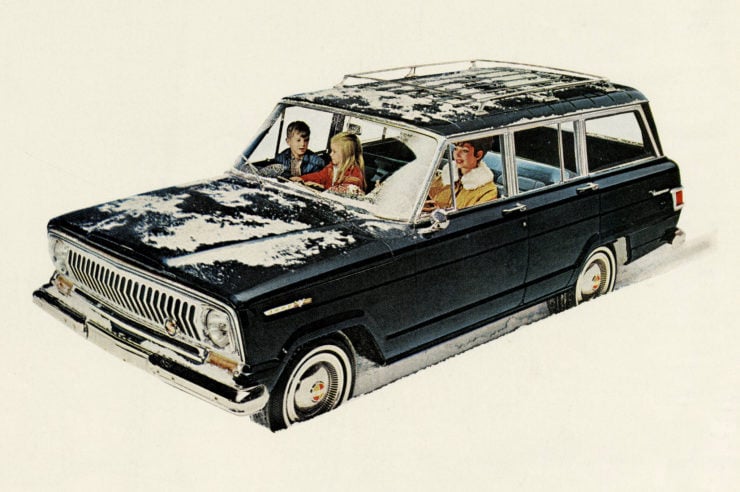

The independent front suspension for the 4WD was also discontinued so all vehicles were fitted with a standard and uncomplicated beam front axle with leaf spring suspension, just as the rear had been throughout production.
Kaiser Jeep made a change of engine in 1968 also. The new engine was the 350 cu. in. (5.7 litre) Buick Dauntless V8 which produced 230 hp and torque of 350 lb/ft @ 2,400 rpm. This would not last long however as AMC acquired Kaiser Jeep Corporation in 1970 and part of their impact on the Wagoneer was to ensure it was only fitted with AMC engines.
Thus it was in 1971 the Buick Dauntless V8 was replaced with an AMC 360 cu. in. (5.9 litre) V8, and an AMC 401 cu. in. (6.6 litre) V8 was offered as an optional extra. That year AMC also offered an X-coded special model finished in “Golden Lime” paint and decorated with “wood” panels on the side: the “wood” being a vinyl wood look-alike finish.
Model Years 1972-1983
The Wagoneer remained largely unchanged for 1972 but in 1973 AMC introduced the vehicle with the Quadra-Trac constant 4WD system. The British Range Rover had been introduced in 1969 with a constant 4WD system and Jeep needed to catch up.
Perhaps they had information that the British were planning to debut the Range Rover in the US market in 1971 with a price of US$5,300.00 and thus this would be a significant competitor to the Wagoneer. As it turned out Land Rover were not able to make that debut happen and finished up having to withdraw from the US market in 1974, giving Jeep some breathing space. The Range Rover would not make its American debut until 1987.
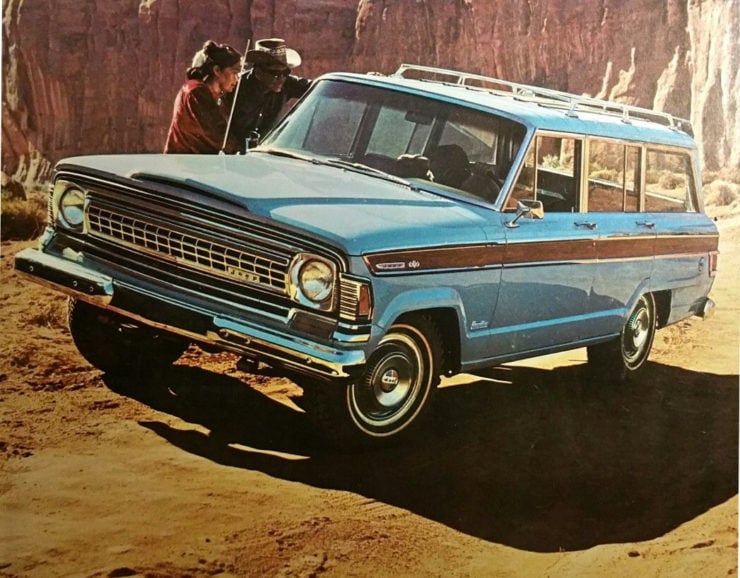

The Wagoneer’s “glasshouse” was modernized and re-styled in 1973, and it got front disc brakes as standard while keeping drums at the rear. Disc brakes at the front was a significant safety improvement while retaining drums at the rear made sense also as drum brakes are more suited to the mechanical operation of the handbrake.
Three years later in 1976 AMC did some re-engineering of the Wagoneer strengthening the frames with boxed side-rails and stronger cross-members, and worked to make the vehicle more and more luxurious despite this necessitating the price going up.
The top of the range Wagoneer at this time was the “Limited” and it was introduced in 1978. This model included the features included in the previous Super Wagoneer and added front bucket seats, cruise control, an AM/FM radio with CB radio also, plush carpet, an integrated roof rack, alloy wheels, and “Wood” side panels like that which had been used on the 1971 “X-coded” model. This was to become a sought after hallmark feature of the Jeep Wagoneer.
Engines for the Limited were the AMC 360 cu. in. V8 as standard and the 401 cu. in. V8 as an optional extra.
The Wagoneer was treated to some significant styling changes in 1979 which included a new plastic front grill which had a protruding style about it and led to that model being referred to as the “pig nose grill”. The vehicle was also fitted with one piece aluminium bumpers.
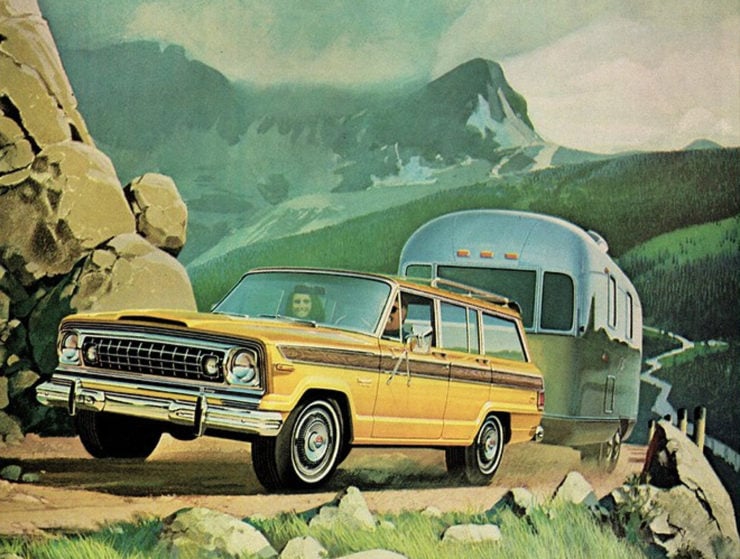

All was not to stay happy for long however when the 1979 oil crisis hit home and fuel prices soared while fuel availability plummeted. Suddenly having a big gas guzzling V8 was not such an attractive option and customers started looking for vehicles that would deliver rather better fuel economy than sub-10 miles to the US gallon.
The solution was to re-introduce the AMC 258 cu. in. (4.2 litre) inline six cylinder engine mated to a manual transmission which improved things significantly.
In 1983 the transmission was changed to a three speed automatic mated to a part time 4WD “Selec-Trac” which went back to necessitating the driver manually selecting 4WD when needed and manually changing back to 2WD when on paved roads.
That thrifty combination got the fuel consumption up to 18 miles to the US gallon in city driving and a quite fantastic 25 miles to the US gallon in highway cruising.
For those that relate to the more generous Imperial gallon that translates to 22 mpg around town and a whopping 30 mpg on the highway – that’s the sort of economy one would expect from a moderate sized six cylinder conventional car. In truth this was a very good achievement, made necessary by difficult times.
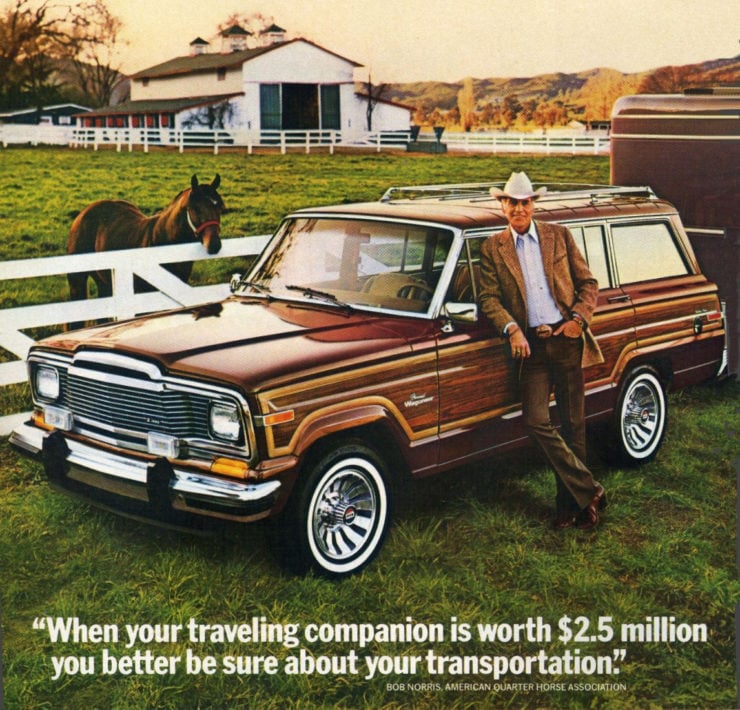

For 1981 AMC fielded three models of the Wagoneer; the base model was the Custom Wagoneer which featured power brakes with discs at the front, power steering, a four speed manual gearbox and the Selec-Trac part time 4WD system. The trim was very car like with faux wood instrument cluster and steering wheel inserts, carpet, and powered tailgate window.
The intermediate model Wagoneer was the Brougham and it was identified by its slim wood side panels, along with more upmarket bright-work window and quarter light trim.
The Brougham also came with an integrated roof rack. It featured the Selec-Trac part time 4WD and in 1983 this system was changed to being vacuum operated via a dashboard mounted control. This was a nice convenience when it was working but of course a vacuum leak could render the system inoperable. Its one of the things you check on if you are planning on buying a Wagoneer so fitted.
The top of the range was the Wagoneer Limited whose luxury features were not limited to those of the previous Limited version but also included a leather covered steering wheel, Quadra-Trac full-time 4WD with automatic transmission, cruise control, power seats for the driver and passenger, and improved insulation to ensure a “Cadillac” style experience of quietness and comfort.
The Wagoneer Limited cost about the same as a luxury Cadillac but it offered the advantages of its 4WD “go-anywhere” abilities that the Caddy could not. It was in truth your luxury car that would take you “huntin’, fishin’ and shootin'”, and it would take you to a formal ball dressed in your best finery as well as being a spacious shopping cart.
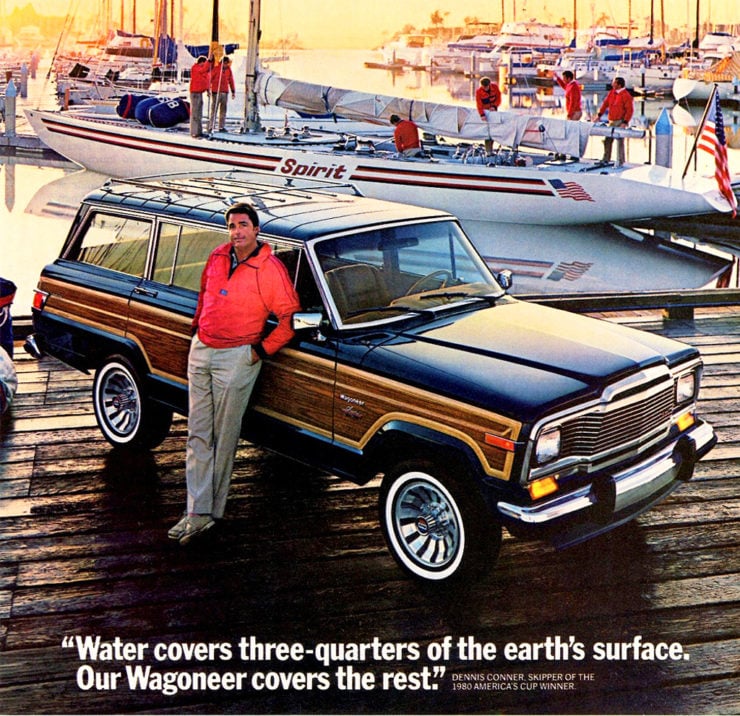

Model Years 1984-1986
AMC decided that 1984 would be the year they tested customer tastes by introducing something rather different. They created a “Wagoneer” that was based on the smaller XJ unibody used for the Jeep Cherokee. This model was offered in a standard Wagoneer trim, and luxury Wagoneer Limited trim. Happily AMC had the wisdom to continue to offer the original body on chassis SJ Jeep Wagoneer models and although AMC had expected to be able to phase out the SJ Wagoneer models it turned out that customers wanted the SJ and continued to buy them in good numbers despite them being more expensive.
The SJ Jeep Wagoneer had, by this stage, proven itself to be a timeless design. The highly respected Toyota Landcruiser, including the more luxurious station wagon, also used a body on chassis construction and that was part of the reason for that vehicle’s popularity also.
As the “Wagoneer Limited” name was being used for the XJ unibody model based on the Cherokee AMC coined the name Grand Wagoneer for the top of the line model while retaining the Wagoneer Custom for the base model. The Jeep Wagoneer Custom was made as a not so many frills vehicle with part time 4WD, steel wheels with ordinary hubcaps, and a more simple functional interior. The Grand Wagoneer continued with the features of the original SJ Wagoneer Limited including full-time 4WD and it sold well, while the cheaper SJ Wagoneer Custom did not and was phased out.
This left three models bearing the Jeep Wagoneer badge; the XJ unibody Jeep Wagoneer Custom, the XJ unibody Jeep Wagoneer Limited, and the SJ body on chassis Jeep Grand Wagoneer. When you are looking at buying a “Jeep Wagoneer” it is important to be aware of the differences between these models.
The SJ Grand Wagoneer was offered with an improved handling package in 1985. This package included gas shock absorbers, lower friction rear springs, and a different specification front anti-roll bar.
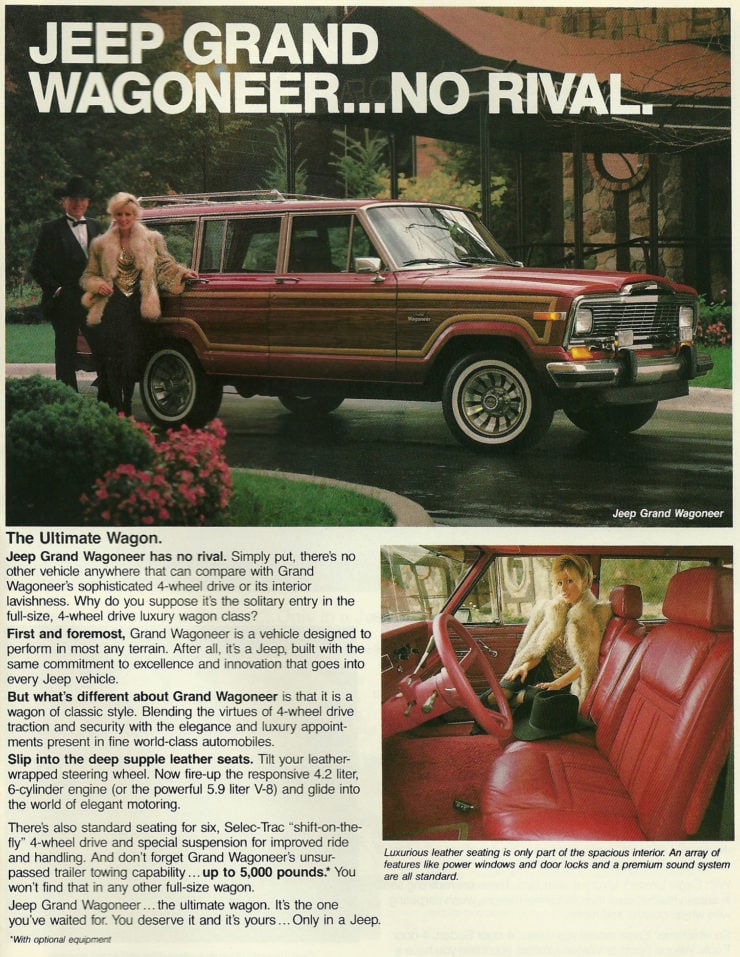

The following year the model was treated a dramatically face-lifted interior which included the move to square gauges, fitting of a new sound system that included a cassette player, and a power sun-roof was offered as an option, this being manufactured by American Sunroof Corporation. The standard engine was the 360 cu. in. AMC V8.
The SJ Grand Wagoneer was also treated to the latest in tyre technology with the fitting of Michelin “Tru-Seal” P235/75R 15″ radial tyres. As the name would suggest these tyres were claimed to be “self-sealing” in the event of a puncture. This could be expected to work in the event of a minor puncture but of course a spare tyre was essential in the event the tyre casing was damaged beyond the ability of the “Tru-Seal” technology to cope with it.
This was still the era before mobile phone technology and so calling for help was rather more difficult than it tends to be nowadays. Those were the days when I would have tubes in my tyres and carry a spare tyre, spare tube, puncture repair kit, tyre levers and a rubber hammer – and I suspect a lot of Jeep Wagoneer owners did the same. If you had a flat tyre back then you could have no expectation that the “cavalry” would be coming to your rescue.
Model Years 1987-1991
1987 was the year that Chrysler Corporation bought AMC and thus acquired the Jeep brand. Chrysler opted to keep the Jeep Grand Wagoneer in production with minimal changes and still fitted with the AMC engine.
Chrysler made significant improvements to the quality control in manufacture of the Grand Wagoneer and this extended to the use of cathodic electrocoating primer which greatly improved corrosion restance, and a modern base-clearcoat paint job on top of that. Additionally the wood paneling on the vehicle’s sides were improved. So the Jeep Grand Wagoneers made during the Chrysler period are the most preferred of all the SJ Wagoneers.
A number of factors ultimately led to sales of the iconic SJ Jeep Grand Wagoneer declining, but the decisive killer were the changes in the US Federal Motor Vehicle Safety Standards which the original SJ design could not comply with.
Thus it was on June 21, 1991, the last Jeep Grand Wagoneer rolled off the assembly line, bringing to an end a 28 year production run. The 1989-1991 Grand Wagoneers are considered the pick of the crop and these are the ones which, if they are in good condition and have moderate mileage, command the highest prices.
Buying A Jeep Wagoneer
If you are looking for a Jeep Wagoneer its best to start out with the realisation that prior to the Chrysler take-over, and to some extent afterwards, these vehicles were famous for “nickel and diming” their owners to death. Build quality was not what it should have been, and rustproofing certainly wasn’t.
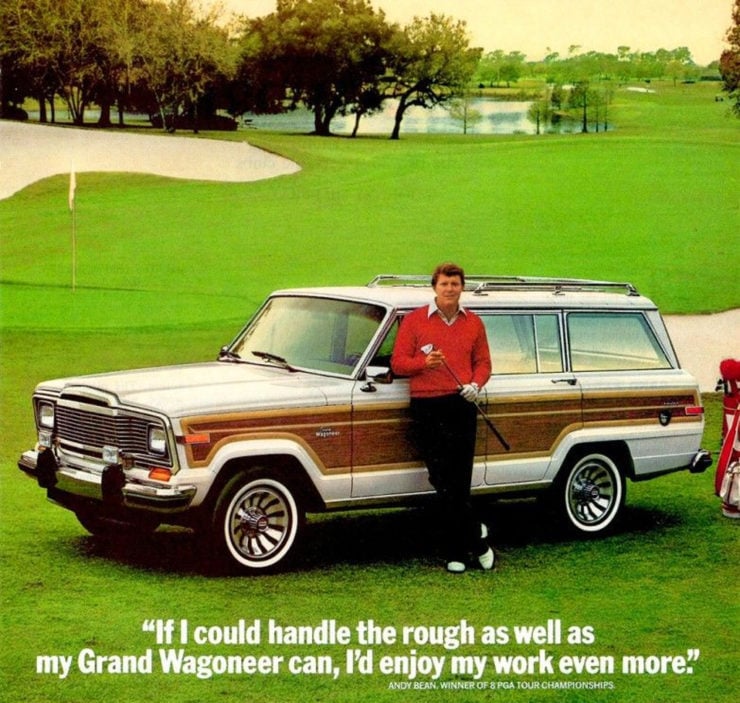

Chrysler improved on the rustproofing when they began using cathodic electrocoating primer, but the bodywork was not galvanized, and the chassis was not galvanized either. In truth its important to remember that these vehicles, gorgous though they are, were a product of the 1960’s to 1980’s, a time when for many manufacturers “a bit shoddy” was considered to be good enough: and it was that attitude that allowed the Japanese car industry to demolish Britain’s car industry and make great inroads into the American market.
So, as with any older vehicle, examination for rust damage is your first concern, and accident damage comes second. Check the door frames, lift up the floor coverings and check the footwells for rust and/or repair. Look in all the places that moisture might occur, and also check the vehicle’s history: if it has lived in an area where salt is used to de-ice roads then steer clear of that vehicle.
It has been said by one past owner of a couple of Grand Wagoneers that Jeep dealers had a private joke that the optional extra all Jeep Wagoneers should have was a net of some kind fitted under the vehicle to catch the various pieces that would fall off. Whether that’s true or not I don’t know, but there are people out there with not so positive accounts of their Jeep Wagoneer ownership.
It is to be hoped that over a few decades of use and failure of various parts that the vehicle you are considering buying might have been pretty well de-bugged: but you can’t assume that.
As far as the AMC V8 engines are concerned the carburettor was one major source of trouble, followed by the Motorcraft ignition system. The carburettor used was specifically customized for the Wagoneer and so it is necessary to rebuild it rather than replace it with something from another vehicle: this is one of those jobs for a competent professional rather than an enthusiastic amateur. Other than that the rear main oil seal needs to be watched.
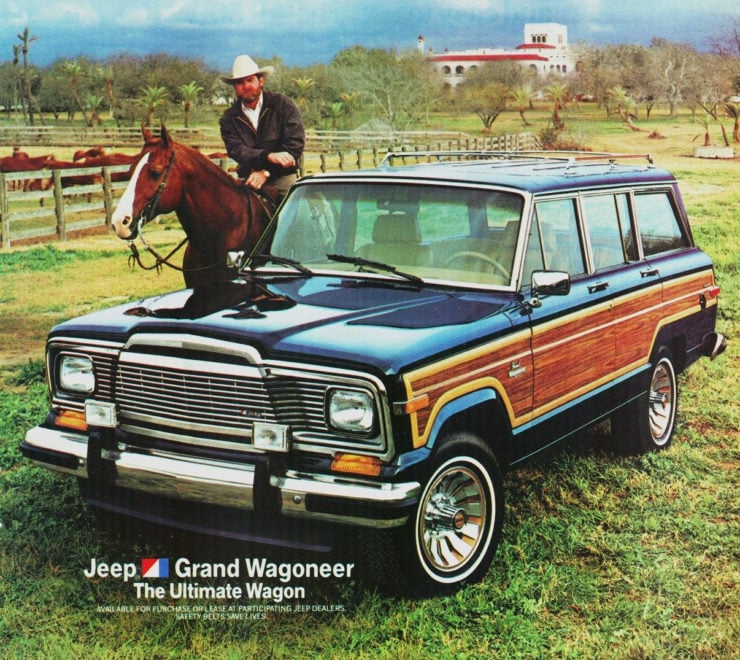

The dash mounted vacuum operated Selec-Trac part-time 4WD was prone to problems if a vacuum leak occurred.
The power rear window mechanism was also a source of trouble and a stuck rear window, or one that broke, was another cause of unhappiness for owners.
So, if you are in the market for a Wagoneer it is not recommended that you go out and look for the cheapest one you can find with a view to renovating it using parts you can scrounge at the local wrecking yards: a Wagoneer can be not only a “money pit”, but also a thing that can suck the life out of you as you open “Pandora’s Box” and find all sorts of troubles that you weren’t aware of when you bought your car. Instead look for the best and lowest mileage Wagoneer you can find, and examine it thoroughly before parting with your hard earned money.
When replacing parts on your Wagoneer it might be best not to go after original parts but to instead look for modern replacements which are often of better quality and which are likely to be in much better shape than parts from the wreckers. There are a number of suppliers such as Team Grand Wagoneer which it can be worthwhile to check out thoroughly.
There are also professionals who specialise in the Jeep Wagoneer, especially the Grand Wagoneer. So if you have the budget this could be a safe investment, a way to acquire a car that has been properly sorted out and which can be expected to be a cause of joy and satisfaction rather than wailing and gnashing of the teeth. Have a look at GrandWagoneer.com to get an idea of the sorts of things on offer.
Conclusion
The Jeep Wagoneer was a superb concept and can be an utter delight to own and use. But be aware that the phrase “They don’t make them like they used to” can be either positive or negative. In the case of the Wagoneer there are happy owners, and there are unhappy owners. Be aware that quality control, especially on the pre-Chrysler vehicles, was not what it could or should have been so if you are buying one of these old cars make sure you have your eyes wide open.
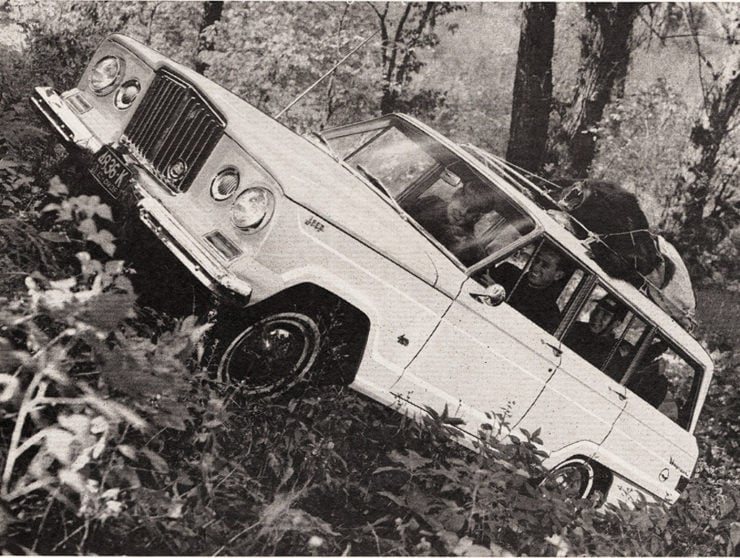
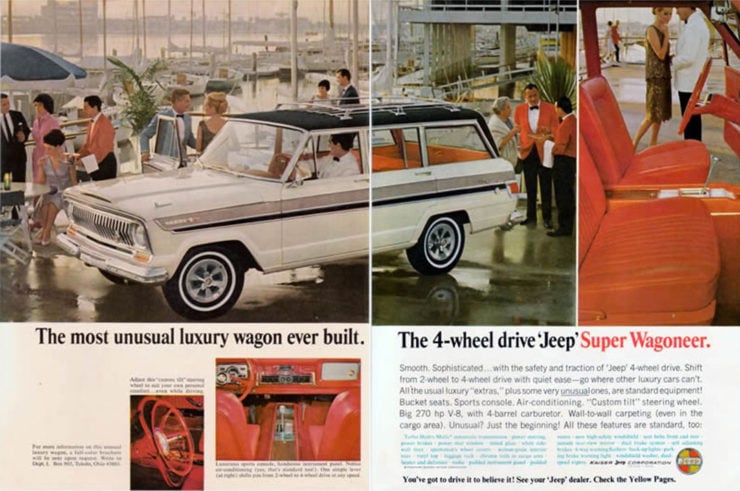
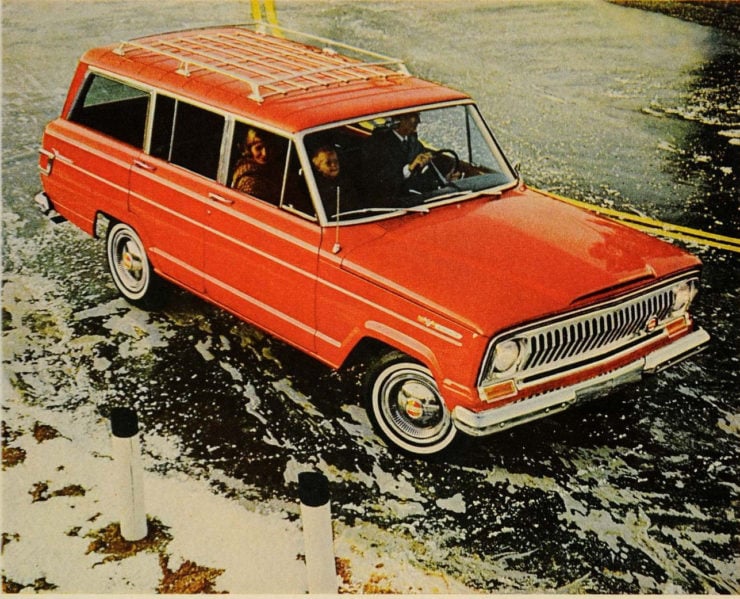
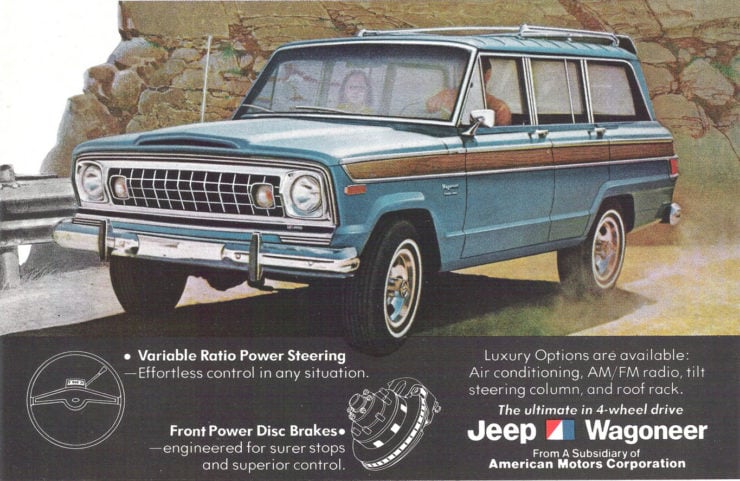
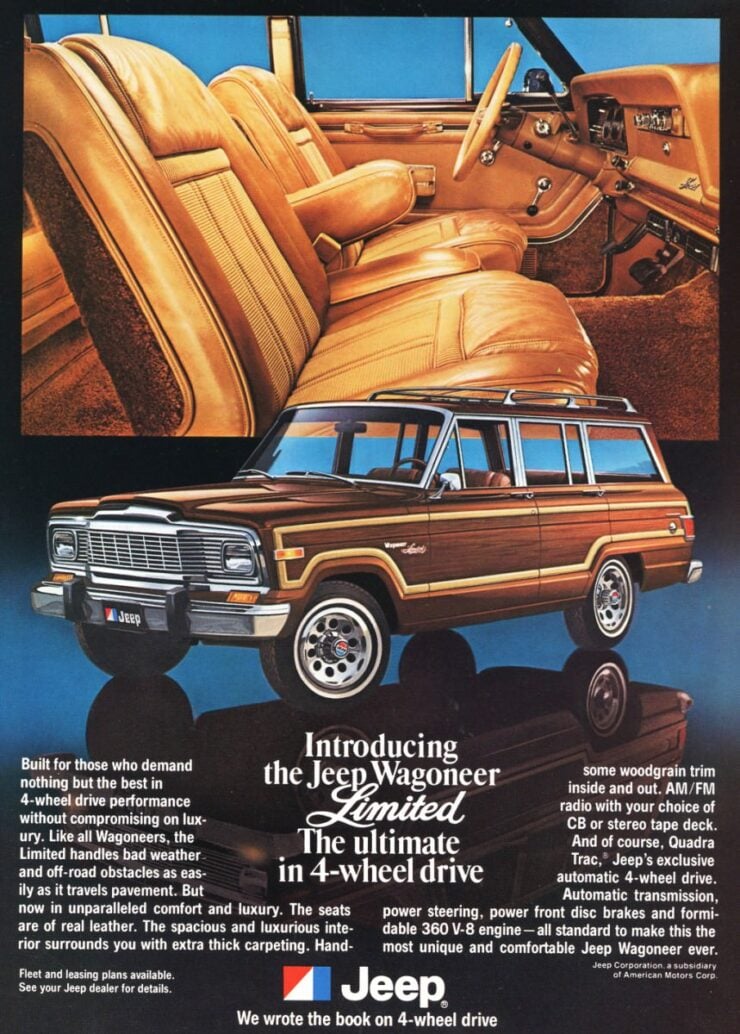
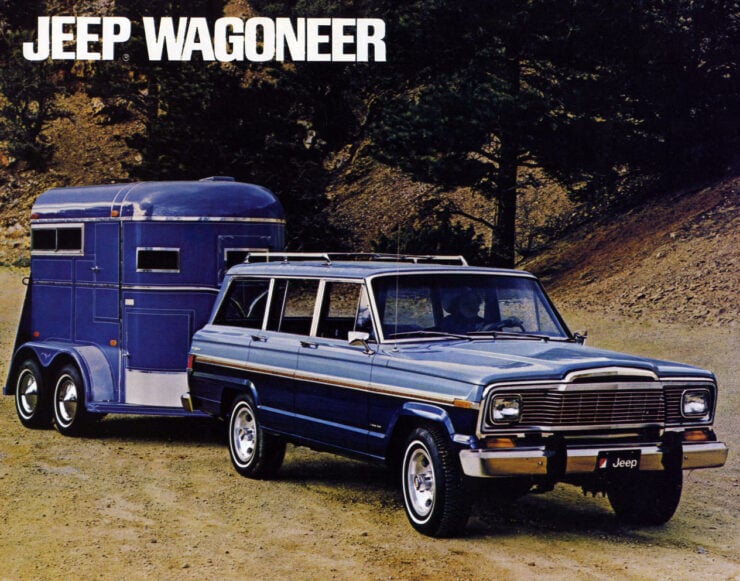
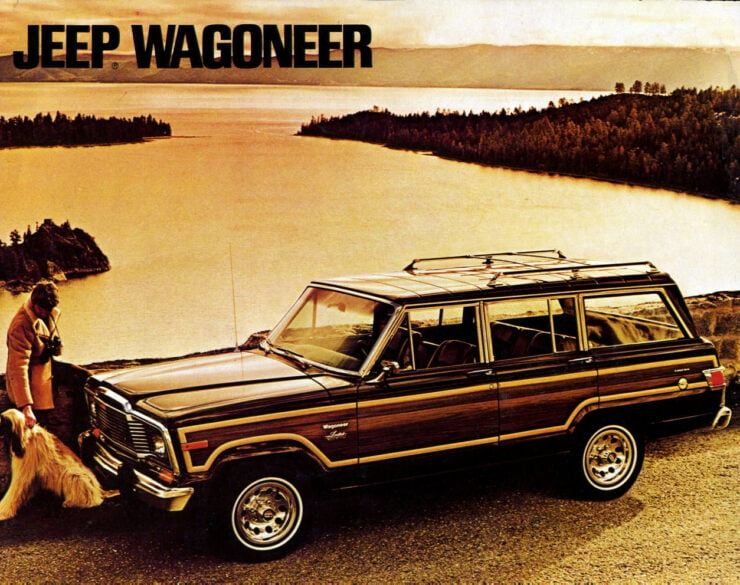
Image Credits: AMC, Chrysler, Kaiser Jeep, AMC.

Jon Branch has written countless official automobile Buying Guides for eBay Motors over the years, he’s also written for Hagerty, he’s a long time contributor to Silodrome and the official SSAA Magazine, and he’s the founder and senior editor of Revivaler.
Jon has done radio, television, magazine, and newspaper interviews on various issues, and has traveled extensively, having lived in Britain, Australia, China, and Hong Kong. The fastest thing he’s ever driven was a Bolwell Nagari, the slowest was a Caterpillar D9, and the most challenging was a 1950’s MAN semi-trailer with unexpected brake failure.

